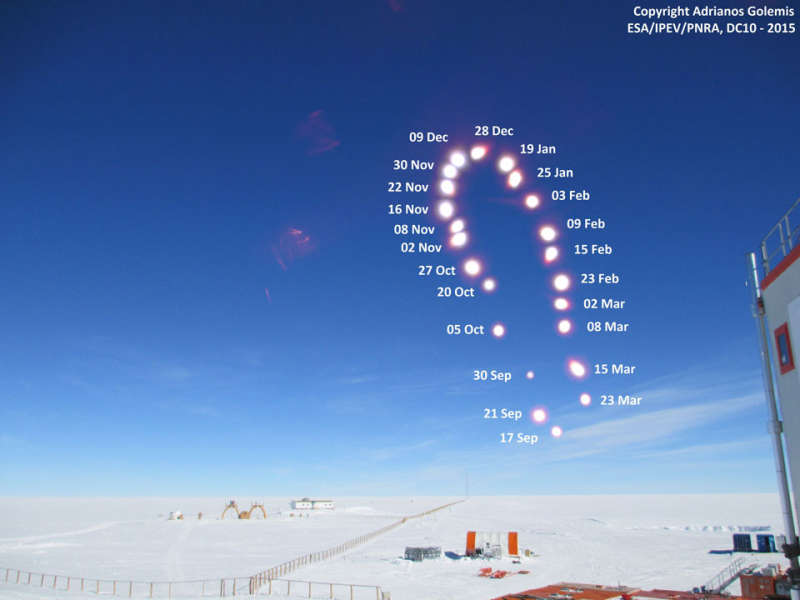Credit & Copyright: Adrianos Golemis
Explanation:
Does the Sun return to the same spot on the sky every day? No.
A better and more visual answer to that question is an
analemma,
a composite image taken from the same spot at the same time over the course of a
year.
The featured weekly analemma was taken despite
cold temperatures and
high winds near the
Concordia Station in
Antarctica.
The position of the Sun at 4 pm was captured on multiple days in the digital composite
image,
believed to be the first analemma constructed from
Antarctica.
The reason the image only shows the Sun from September to
March is because the Sun was below the horizon for much of the rest of the year.
In fact, today being an
equinox, the Sun rises today at the
South
Pole
after a six month absence and won't set again until the next
equinox in March, baring
large atmospheric
refraction effects.
Conversely, today the Sun sets at the
North Pole
after half a year of continuous daylight.
For all of the Earth in between, though, the
equinox means that today will have a nighttime and daytime
that are both 12 hours long.
Follow APOD on:
Facebook,
Google Plus,
or
Twitter
1999 2000 2001 2002 2003 2004 2005 2006 2007 2008 2009 2010 2011 2012 2013 2014 2015 2016 2017 2018 2019 2020 2021 2022 2023 2024 2025 |
Yanvar' Fevral' Mart Aprel' Mai Iyun' Iyul' Avgust Sentyabr' Oktyabr' Noyabr' Dekabr' |
NASA Web Site Statements, Warnings, and Disclaimers
NASA Official: Jay Norris. Specific rights apply.
A service of: LHEA at NASA / GSFC
& Michigan Tech. U.
|
Publikacii s klyuchevymi slovami:
equinox - Ravnodenstvie
Publikacii so slovami: equinox - Ravnodenstvie | |
Sm. takzhe:
Vse publikacii na tu zhe temu >> | |
